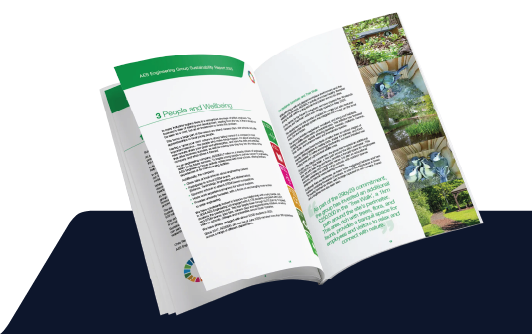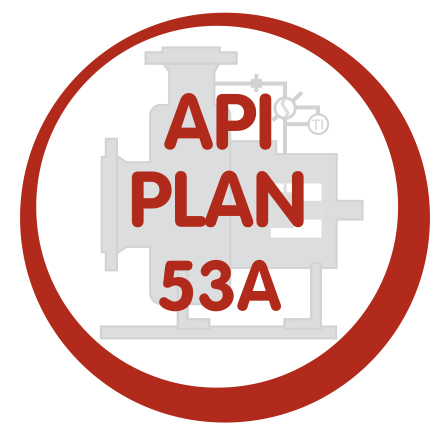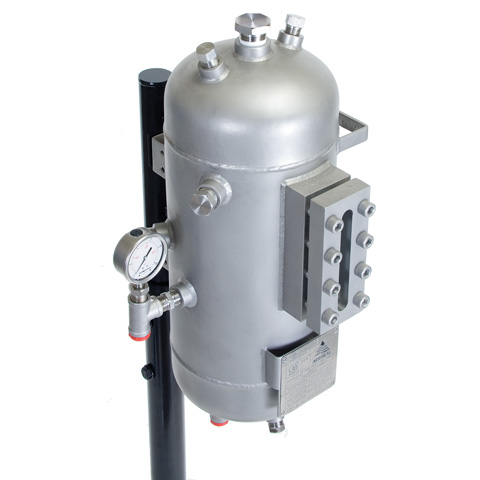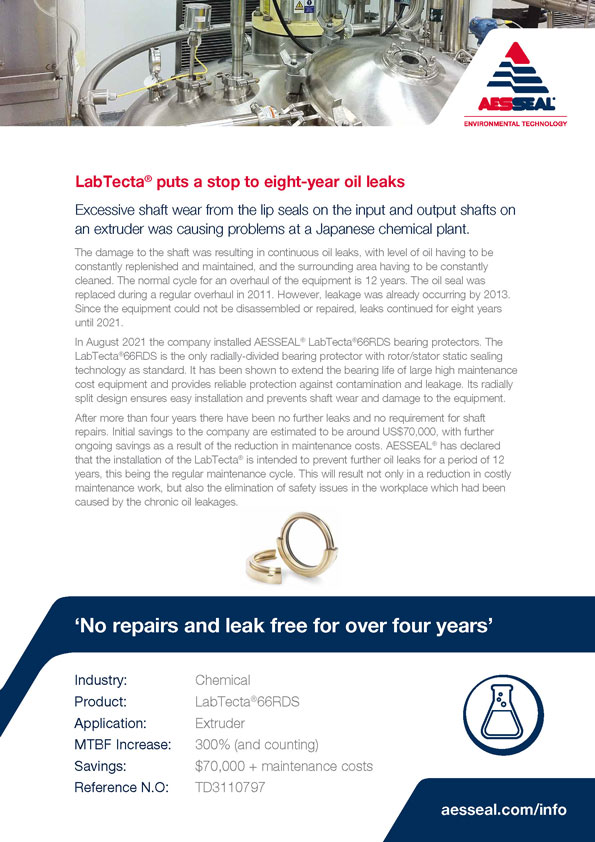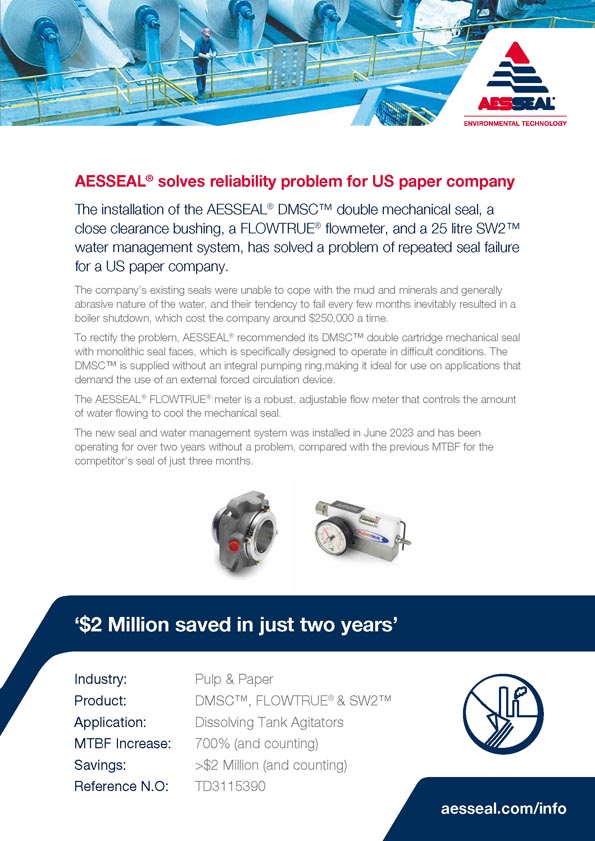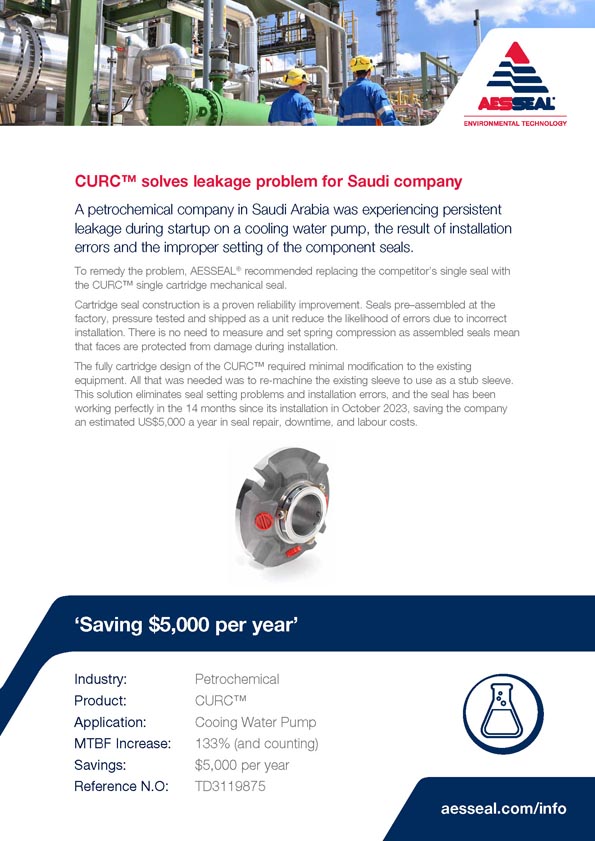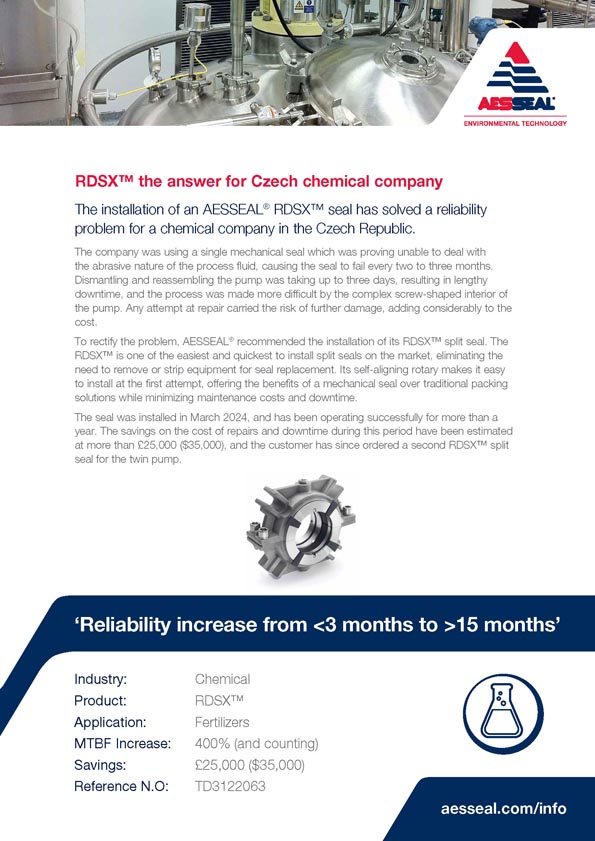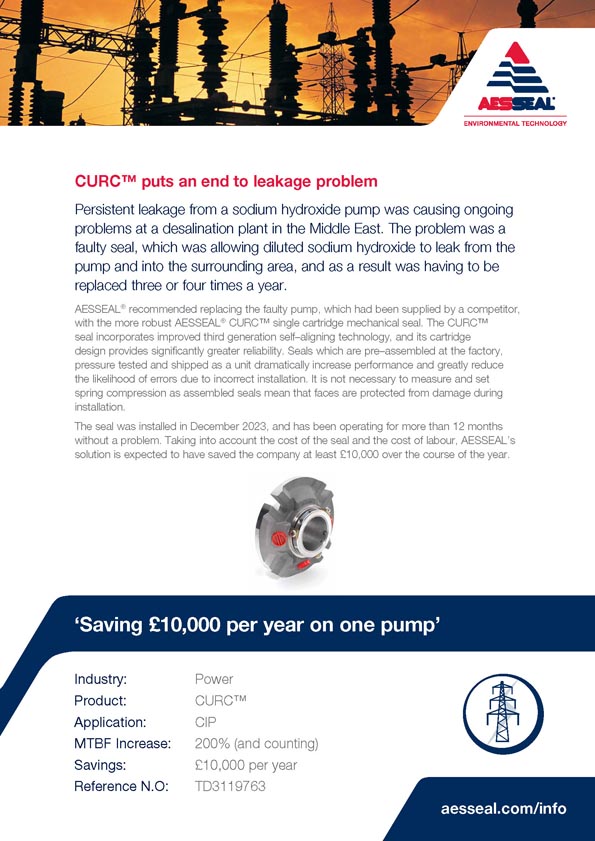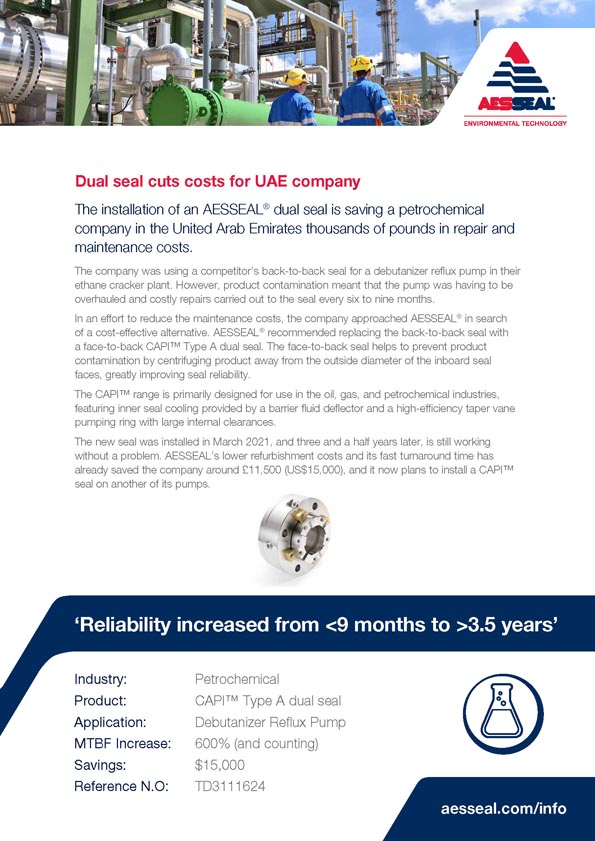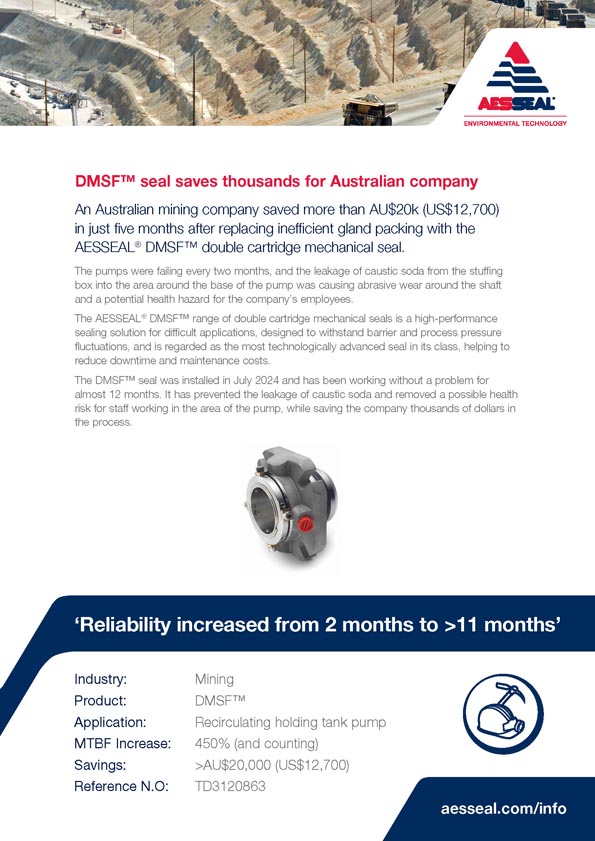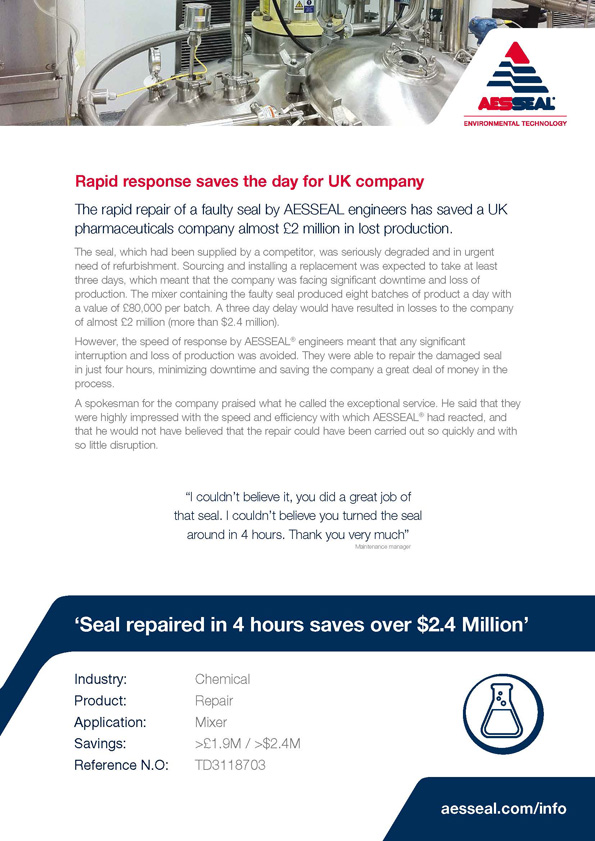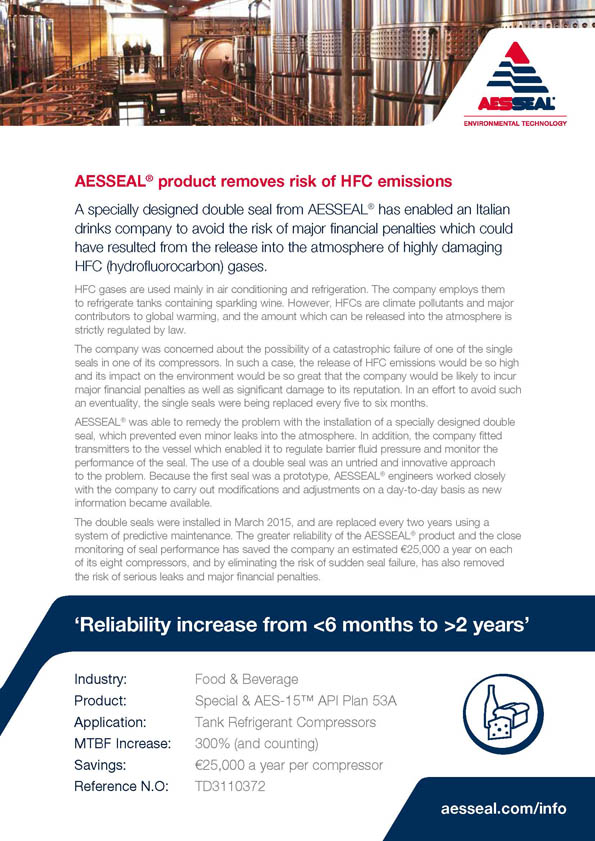
A specially designed double seal from AESSEAL® has enabled an Italian drinks company to avoid the risk of major financial penalties which could have resulted from the release into the atmosphere of highly damaging HFC (hydrofluorocarbon) gases.
More Industry Related Content
More API Related Content
With Fabio Airoldi
An Italian drinks company was facing the threat of financial penalties and a damaged reputation due to the leakage of greenhouse gases from its refrigeration tank compressors. A potentially huge problem was solved by a first-of-its-kind solution. AESSEAL Italy’s technical manager and onsite/sales support is Fabio Airoldi.
How did the contract come about? Did the company approach AESSEAL, or the other way around?
AESSEAL had approached the end user for some years. After I had obtained trust from the customer, he proposed to us the application of compressors due to potentially high difficulties in containing leakages of greenhouse gases in the case of original seal failure (component seals).
Was this an existing customer? If so, what products and services was AESSEAL supplying to them?
Yes, before they asked us to support in the compressor application we were already the supplier of Martini, but for a small business (component seals on production pump and some cartridge seals for side entry mixers).
What was the problem with the competitor’s seal? Why was it failing and what happened?
The problem with the original seals (component seals) were mainly due to the fact that they were single seals. Single seals on this type of application had physiological leakages of greenhouse gasses as they are mixing with the oil that is needed to lubricate the screws of the compressor. However, the worst scenario was catastrophic failure of the seal. In some cases, being a single seal, the failure of the seal (generally due to the break of rotary and mainly of the stationary in SIC), caused the leakage of a lot of gas in the environment. Even if the customer was able to act to stop the compressor in a very short time, also in the night, failure of the single seal in just a few minutes permits the escape of a large volume of gas that, at the end of the year, the customer should declare to the authorities with the risk of incurring penalties.
Was the situation serious? It sounds as if it could have been expensive and damaging to the environment.
Yes, for the customer the situation was serious because they had a short life of a compressor, the necessity to have people 24/7 who were able to stop the machinery in case of failure, and last but not least, as told above, the failure of a single seal could the cause leakage of a large number of gasses.
How did AESSEAL convince the company that a specially-designed seal was the right solution? How difficult was this?
Did it take a long time to convince them to make the change? Explaining that using a dual seal (originally we thought not pressurized seals due to plant requirements) they could contain gasses in our vessel, reducing immediately the greenhouse gas emissions, created a good approach from the customer to our solution, even if the cost of the investment for a dual + system solution was high against that of a simple single seal. The special design was something that we explained immediately because, before further discussing the application, we took the dimensions of the machinery and it was immediately clear that special design was the unique way.
Was it a difficult situation to rectify and how did you come up with the prototype?
In terms of adjustment starting from prototype, we have done several. A compressor works in a different way from a pump, so we needed to adapt our solution to what we discovered step by step. At the end the type of seal barrier fluid also changed to reduce the risk of compressor oil dilution. At the end we used the same oil used to lubricate the screw of the compressors.
Were there any problems or challenges with the installation?
Pressure: the compressor had a higher pressure in static condition than in the dynamic one, but greenhouse gasses were present in the compressor oil in both conditions, so we had to over pressurize the system to cover static conditions having, in this way, a high delta P from barrier fluid to product in dynamic phase. Furthermore, the correct choice of O-ring. Generally, on oil Viton of Kalrez can be used. We had more than one failure on the prototype before understanding that the EPR O-ring was the right choice (Viton or Kalrez contain fluorine in their molecular structure, the same fluorine contained in the lubricant oil of compressors. For this reason, we had to choose the EPR that doesn’t contain fluorine).
How many seals were required in the original order? Has AESSEAL supplied any more since that time?
One seal as a start (as a “prototype”) to understand the application and show to the customer that we could solve the problem. We immediately solved the problem of high leakage of gasses even in the case of catastrophic seal failure, then we had to spend more time to give the customer a reliable solution that, at the end, achieved more than two years of MTBF. After the first installation, they equipped seven or eight compressors, reaching an MTBF of at least two years.
Why are the seals replaced every two years and is it a difficult process?
Mainly because after two years, more or less, seals start to have high physiological leakages of oil from external faces as oil use, to eliminate risk of dilution of the compressor oil, has a high viscosity and is not the best for the seal lubrication (RPM are around 4k).
Can you outline what savings or other benefits have resulted from AESSEAL’s solution?
The customer increased MTBF of the compressors and reduced (probably eliminated) greenhouse gas emission into the atmosphere, which is better for the environment and reduced/eliminated penalties from the authorities at the end of the year.
Has this contract led to any further business with this company? Is AESSEAL now the company’s preferred seal supplier?
Yes, AESSEAL was and will be the preferred supplier of mechanical seal of the customer. Unfortunately, in this customer application there are not so many, so we can only maintain turnover reached and try to improve a little bit when some new application becomes a problem for the customer or when we can promise improvement with a more reliable solution.
Can you give any examples of comments/feedback from the company about the quality of the products or services AESSEAL has provided?
The fact that AESSEAL is appreciated by the customer has been clearly demonstrated by the good relationship we have with all levels of the maintenance people and buyers. In terms of business, the main demonstration about our consideration as seal supplier has been the acceptance to buy another six plus two seals after the first installation of the compressor.
Has the work helped to win contracts with other companies? If so, in what sectors of industry?
It is not easy as these compressors work with different gasses and the solution can be considered by only customers that have the problem of emission of greenhouse gasses. However, the experience of this application is permitting us to approach all companies that cool something with this type of compressor. We have like for like seals based on the compressor model, but we can fit the dual seal in case the customer has bigger problems due to greenhouse gasses emissions.

